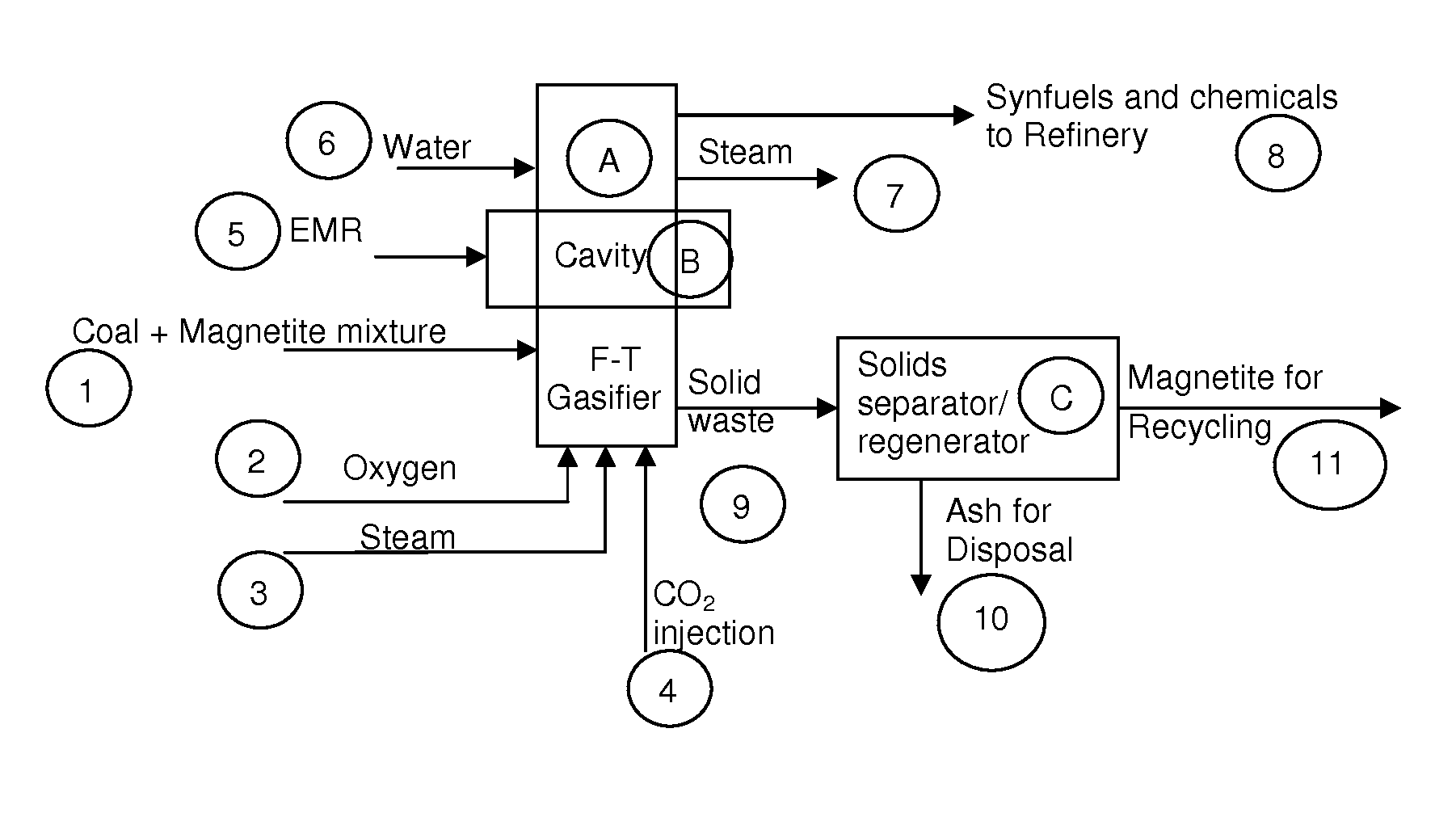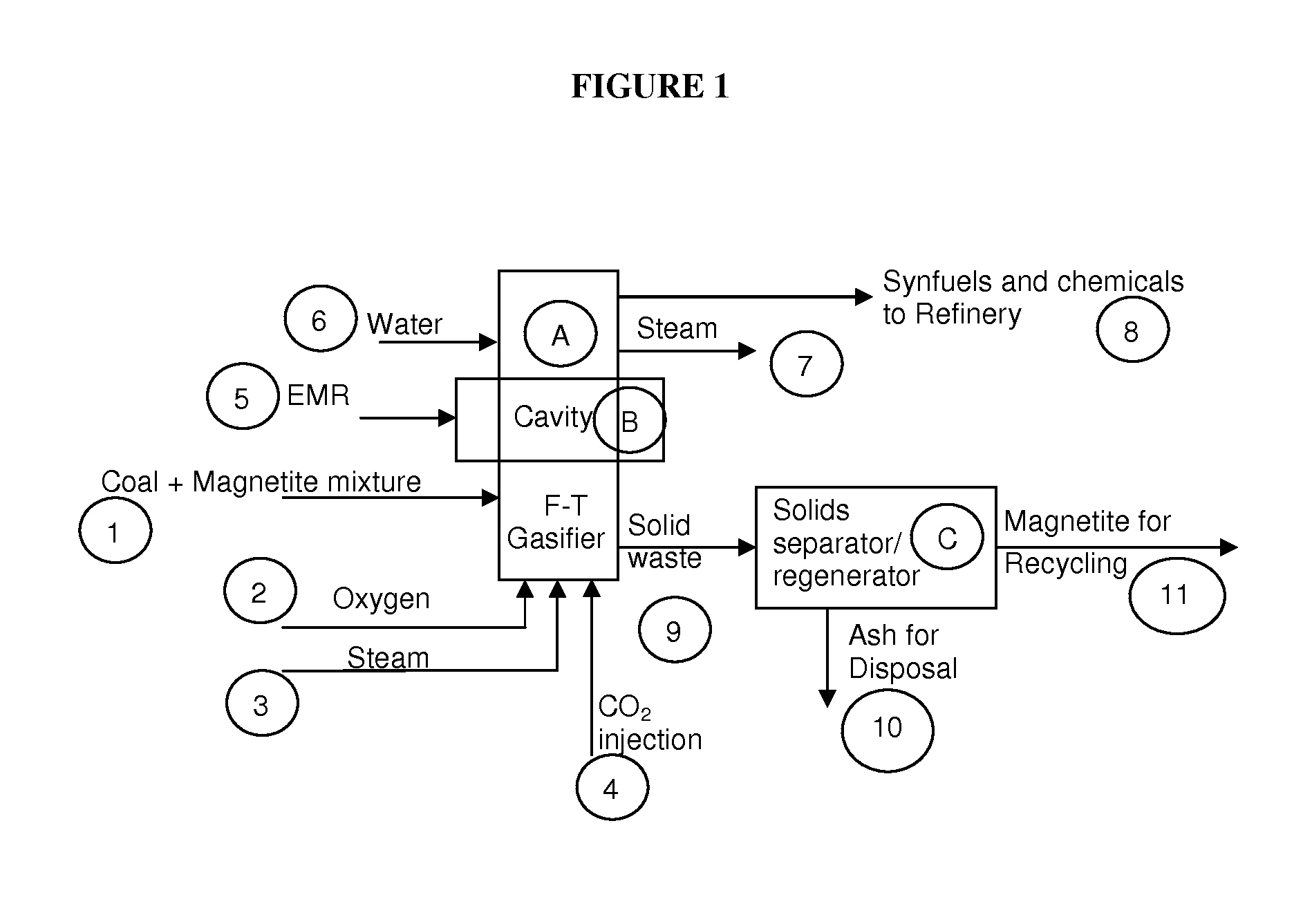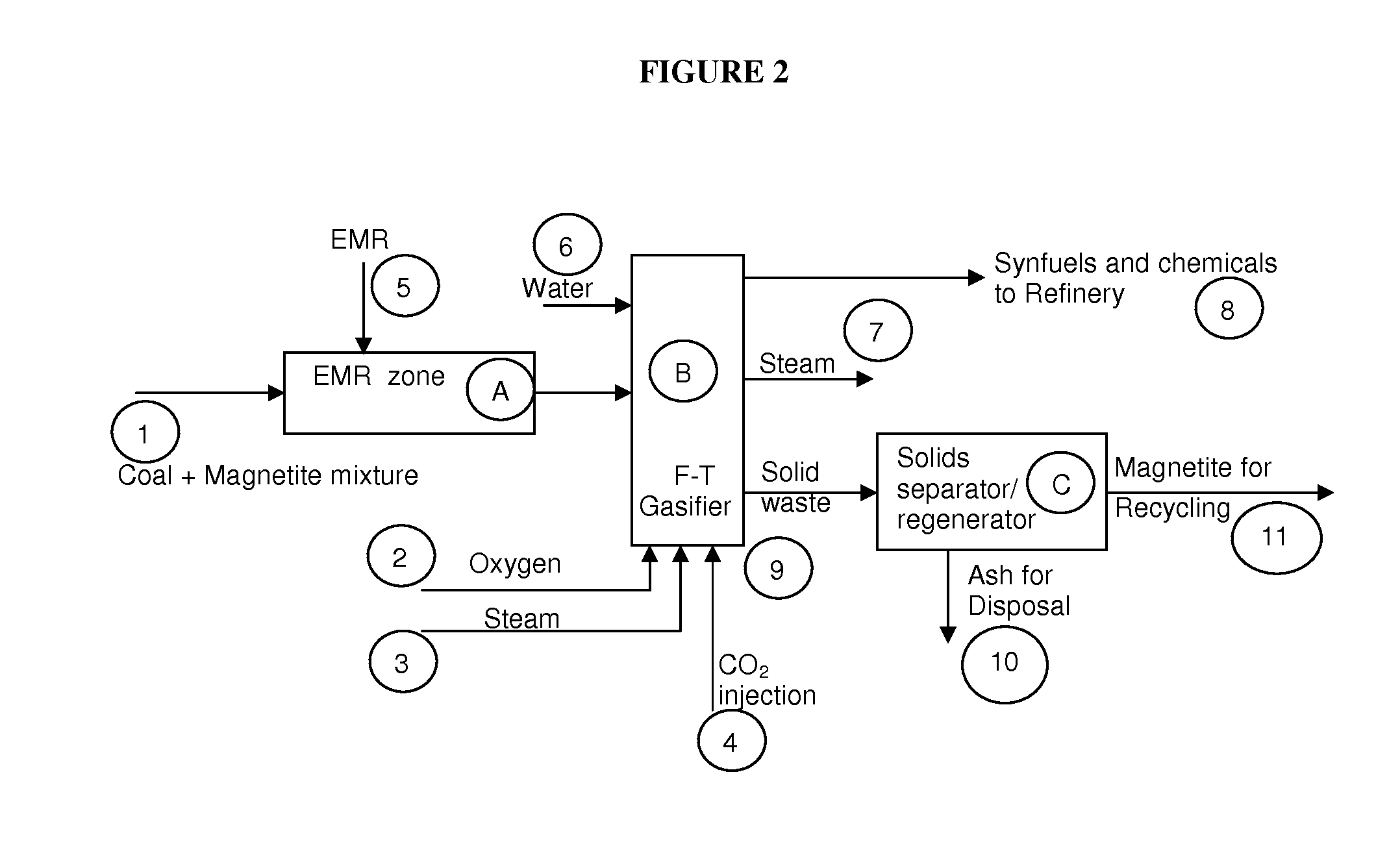Methods and apparatus for liquefaction of organic solids
- Summary
- Abstract
- Description
- Claims
- Application Information
AI Technical Summary
Benefits of technology
Problems solved by technology
Method used
Image
Examples
Embodiment Construction
[0025]The present inventor has discovered an efficient single step process which incorporates electromagnetic radiation (EMR) energy for converting solid organic minerals, such as coal and biomass, into liquid or gas products. The single step EMR process offers a cleaner, more attractive and cost effective approach to producing synthetic fuels. The processes described herein are also referred to as “F-T Gasification Processes.”
[0026]Thus, in one aspect, the present invention relates to an improved process for the conversion of organic matter, such as coal, biomass, or other organic solids to liquid or gas products. Coal liquefaction has its roots in Germany in the early 1900s. U.S. Pat. No. 1,746,464, issued to Franz Fischer and Hans Tropsch in 1930, describes a process for converting carbon monoxide and hydrogen to hydrocarbons in the presence of a catalyst. This process subsequently became known as the F-T Process. According to the '464 patent, temperature plays a decisive role in...
PUM
 Login to View More
Login to View More Abstract
Description
Claims
Application Information
 Login to View More
Login to View More - R&D
- Intellectual Property
- Life Sciences
- Materials
- Tech Scout
- Unparalleled Data Quality
- Higher Quality Content
- 60% Fewer Hallucinations
Browse by: Latest US Patents, China's latest patents, Technical Efficacy Thesaurus, Application Domain, Technology Topic, Popular Technical Reports.
© 2025 PatSnap. All rights reserved.Legal|Privacy policy|Modern Slavery Act Transparency Statement|Sitemap|About US| Contact US: help@patsnap.com



